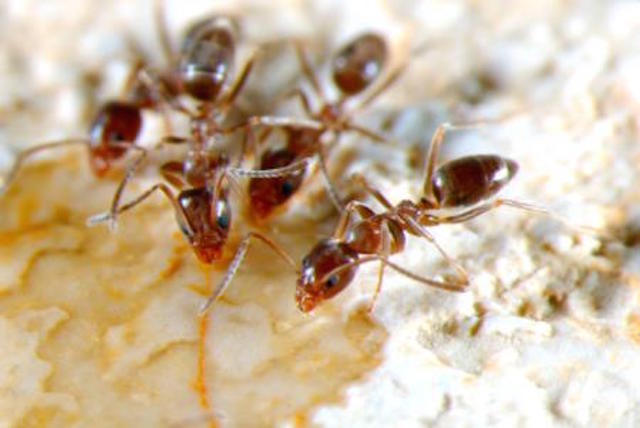
Wandering around the garden this morning in “after-rain moisture”, I found aphids on yellow dahlia blossoms that are already leafed out and blooming. They are confused by the rather warm winter we are having after a five-year drought and are at it early this year. Aphids are small, soft-bodied insects with long, slender mouthparts that pierce stems and leaves, sucking out plant juices. Aphids come in green, yellow, brown, red, or black depending on their species and food source. Some appear waxy or wooly. There are dozens of different kinds of aphids in California. Some have adapted to only one species of plant and are found only on that particular vegetation. They often leave behind curled, distorted leaves and sticky “honeydew” (or poop). Don’t let the name fool you. Honeydew is a “sweet” name for excrement.
Is this an early sign that we are going to have a lot of aphids in the spring? Best be prepared. Control of aphids can be difficult, partly because the females can give birth to up to 12 offspring a day without mating (don’t ask me how they do it!) Some species of aphids mate and lay eggs in the fall and overwinter, attacking in the early spring. Biological control (letting predators like ladybugs control them) is best because insecticides wipe out natural predators such as parasitic wasps that lay eggs inside an adult aphid and leave their young to feast on aphid “innards”. If you spray and kill all the good bugs, you have nothing to fight the bad bugs when the insecticide no longer works. Insecticides last only a few weeks and I don’t believe in systemic insecticide as the soil becomes contaminated. The best plan of attack is to hose (gentle squirt) aphids off as soon as you see aphids and keep at it once a week. Insecticidal soap or a spray bottle filled with 1/8 cup of canola oil) can be helpful in reducing aphid population.This is my favorite home-made recipe for an insecticide.
If you look closely, you’ll see tiny ants around the aphids. The ants are gathering the “honeydew” from the aphids, eating it, and taking it back to their nests for food for their young. Ants take care of the aphids, moving them when necessary for fresh food. Try to reduce your ant population and you’ll reduce you aphid population.
If you are intent on reducing your aphid population with a commercial insecticide, then be wise about what you use and read my blog entry on Good bugs and Bad buds (beneficial insects). Insecticidal soaps and oils are the best choices for most situations. Oils may include petroleum-based horticultural oils or plant-derived oils such as neem or canola oil. These products kill primarily by smothering the aphid, so thorough coverage of infested foliage is required. Apply these materials with a high volume of water. Soaps, neem oil, and horticultural oil kill only aphids present on the day they are sprayed, so applications may need to be repeated. Although these materials can kill some natural enemies that are present on the plant and hit by the spray, they leave no toxic residue. They don’t kill natural enemies that migrate in after the spray so don’t significantly effect the natural balance of your garden.
A daily walk through your garden allows you to stay on top of insect infestations. The best defense against insect pests is to keep a garden free of ants that nurture and protect these sucking insects. Gardens need to be kept in balance with good bugs controlling bad bugs. Encourage birds, frogs, spiders and beneficial insects. Healthy plants can tolerate a moderate number of sucking insects. Water plants appropriately and feed minimally as new, tender growth attract sucking insects. For more information on controlling aphids in your garden go to: UC Integrated Pest Management Website IPM. You’ll find out more than you ever wanted to know!


